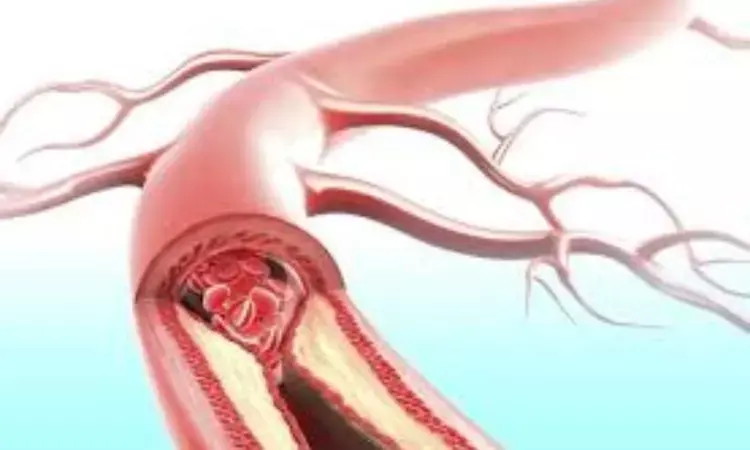- Home
- Medical news & Guidelines
- Anesthesiology
- Cardiology and CTVS
- Critical Care
- Dentistry
- Dermatology
- Diabetes and Endocrinology
- ENT
- Gastroenterology
- Medicine
- Nephrology
- Neurology
- Obstretics-Gynaecology
- Oncology
- Ophthalmology
- Orthopaedics
- Pediatrics-Neonatology
- Psychiatry
- Pulmonology
- Radiology
- Surgery
- Urology
- Laboratory Medicine
- Diet
- Nursing
- Paramedical
- Physiotherapy
- Health news
- Fact Check
- Bone Health Fact Check
- Brain Health Fact Check
- Cancer Related Fact Check
- Child Care Fact Check
- Dental and oral health fact check
- Diabetes and metabolic health fact check
- Diet and Nutrition Fact Check
- Eye and ENT Care Fact Check
- Fitness fact check
- Gut health fact check
- Heart health fact check
- Kidney health fact check
- Medical education fact check
- Men's health fact check
- Respiratory fact check
- Skin and hair care fact check
- Vaccine and Immunization fact check
- Women's health fact check
- AYUSH
- State News
- Andaman and Nicobar Islands
- Andhra Pradesh
- Arunachal Pradesh
- Assam
- Bihar
- Chandigarh
- Chattisgarh
- Dadra and Nagar Haveli
- Daman and Diu
- Delhi
- Goa
- Gujarat
- Haryana
- Himachal Pradesh
- Jammu & Kashmir
- Jharkhand
- Karnataka
- Kerala
- Ladakh
- Lakshadweep
- Madhya Pradesh
- Maharashtra
- Manipur
- Meghalaya
- Mizoram
- Nagaland
- Odisha
- Puducherry
- Punjab
- Rajasthan
- Sikkim
- Tamil Nadu
- Telangana
- Tripura
- Uttar Pradesh
- Uttrakhand
- West Bengal
- Medical Education
- Industry
Presence of subclinical atherosclerosis marker of mortality and its progression increases risk of death, unravels study

The progression of atherosclerosis in people who have no symptoms of it is independently associated with the risk of dying from any cause, according to a new study led by researchers from Mount Sinai Fuster Heart Hospital, published in the Journal of the American College of Cardiology.
This research is also the first to show that advanced imaging can detect atherosclerotic disease of the large vessels long before the appearance of symptoms-an approach that could be used worldwide to prevent cardiovascular disease and risk of death. Together, the findings emphasize the importance of early detection of atherosclerosis.
“The long asymptomatic phase of the disease presents a window of opportunity that has not been exploited in the younger population,” says lead author Valentin Fuster, MD, PhD, President of Mount Sinai Fuster Heart Hospital and General Director of the Centro Nacional de Investigaciones Cardiovasculares Carlos III (CNIC).
Atherosclerosis is a disease in which lipids, such as cholesterol, and other substances accumulate in plaques on the arterial wall, causing the vessels to harden and narrow, and increasing the risk of severe cardiovascular conditions. Subclinical atherosclerosis is a common condition in which these plaques are present in an artery without causing any symptoms or signs of disease. It can affect people of any age and can lead to serious health conditions including stroke, heart attack, and chronic limb-threatening ischemia.
Despite advances in cardiovascular research, it has remained unclear whether the risk of death from all causes in asymptomatic individuals can be predicted by monitoring the extent and progression of atherosclerosis, especially in the carotid arteries, which supply blood to the brain.
The goal of the new study, called the BioImage project-a collaboration between Mount Sinai and the CNIC-was to determine the independent predictive value of the burden and progression of subclinical atherosclerosis above and beyond what can be predicted using established cardiovascular risk factors.
The study included 5,716 asymptomatic U.S. adults with an average age of 69 years (56.7% women) who were examined from 2008 to 2009. The study participants were examined with two imaging techniques. Atherosclerotic plaques in the carotid arteries were measured with vascular ultrasound, which allows detailed visualization of the interior of blood vessels, and calcification of the coronary arteries was assessed by computed tomography.
A subset of 732 study participants underwent a second vascular ultrasound scan more than eight years after the initial examination. All participants were followed up to determine the rate of death from any cause, the main outcome measure of the study.
Over the 12.4 years of follow-up, 901 (16%) of the participants died. Carotid plaque burden and coronary artery calcification measured at the start of the study were both associated with death from any cause. Moreover, progression of carotid atherosclerosis provided further prognostic information and was independently associated with all-cause mortality.
“Vascular ultrasound is a non-invasive and affordable test, and the valuable prognostic information it provides can be used to improve risk stratification and to target lifestyle recommendations for the control of cardiovascular risk factors,” explains Borja Ibáñez, PhD, Scientific Director of the CNIC.
The study concluded that detecting subclinical atherosclerosis early and monitoring its progression can improve the prediction and prevention of death from any cause, offering a valuable tool for clinical practice.
Reference:
Fuster, V, García-Álvarez, A, Devesa, A. et al. Influence of Subclinical Atherosclerosis Burden and Progression on Mortality. JACC. 2024 Oct, 84 (15) 1391–1403. https://doi.org/10.1016/j.jacc.2024.06.045
Dr Prem Aggarwal, (MD Medicine, DNB Medicine, DNB Cardiology) is a Cardiologist by profession and also the Co-founder and Chairman of Medical Dialogues. He focuses on news and perspectives about cardiology, and medicine related developments at Medical Dialogues. He can be reached out at drprem@medicaldialogues.in


